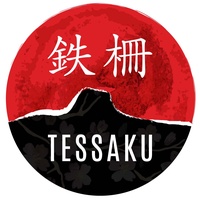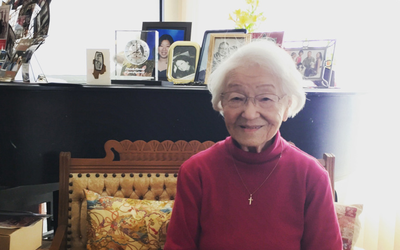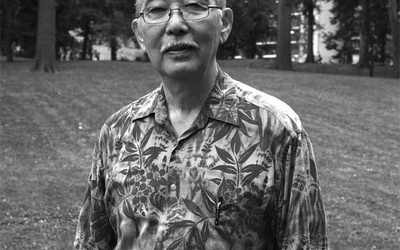Tessaku

Tessaku was the name of a short-lived magazine published at the Tule Lake concentration camp during World War II. It also means “barbed wire.” This series brings to light stories of the Japanese American internment, illuminating those that haven’t been told with intimate and honest conversation. Tessaku brings the consequences of racial hysteria to the foreground, as we enter into a cultural and political era where lessons of the past must be remembered.
Stories from this series
Alice Kanagaki
Sept. 1, 2017 • Emiko Tsuchida
“The Japanese people are not the kind of people to sit back and feel bitter and feel sorry for themselves. They are creative, resourceful and they make the best of a bad situation. Shikata ga nai.” — Alice Kanagaki Teenage fun, good friends, and happy memories of high school is how Alice remembers her time in Gila River. Skim through her high school yearbook and it reads like an average collection of young friends in any other school bonded by dances, …
Maru Hiratzka - Part 2
Aug. 22, 2017 • Emiko Tsuchida
Read Part 1 >> How did they (Hiratzka family) come back to California? Well, I was in Texas and Jordan went to Ogden. I went to Crystal City and joined my family. We were separated for two and a half years and in the meantime Jordan was in Japan with the MIS. Went to the Philippines and they closed up those bars. They stayed there very shortly in Manila then they were sent to Japan. The war ended when he was …
Maru Hiratzka - Part 1
Aug. 21, 2017 • Emiko Tsuchida
I know even in camp when it was declared Japan lost the war, some of these men were very adamant about Japan, they just couldn’t believe it. They went back to Japan thinking that they did not lose the war. But the Japanese, they’re just so strong. — Maru Hiratzka The story of Maru Hiratzka’s life during the war is really a love story. After family decisions took her and her high school sweetheart, Jordan Hiratzka, in opposite directions (she …
Kay Ikuma
July 27, 2017 • Emiko Tsuchida
One of the hardest things was getting immersed back into society, like taking the bus to school some place where there was a mixture of people. We had to put up with a lot of taunting, a lot of ridicule. That was hard, I remember that, being teased a lot. —Kay Ikuma In May of 1942, photographer Dorothea Lange shot the below picture of the Mochida family, prepared with their family’s identification tags and marked bags waiting to board a …
Tadashi Tsufura - Part 2
July 13, 2017 • Emiko Tsuchida
Read Part 1 >> Why do you think the parents and most Niseis never spoke about camp? When the war was going on we were the enemy. After the war, we were still the enemy, so dead silence continued until 1976 when Michi Weglyn published her book “Years of Infamy.” Until then, no one wanted to bring the camp subject up. Also, when we left camp for Seabrook Farms in September of 1944, the war was still going on and …
Tadashi Tsufura - Part 1
July 12, 2017 • Emiko Tsuchida
In the morning you take off, and you don’t come back or see your parents until you go to bed. You went whenever you wanted to. And you don’t tell anybody what you’re doing during the day. What a painful thing it was, and must have been, for the Issei group. — Tadashi Tsufura Growing up in a little farming town in California, Tadashi Tsufura likely never envisioned the influential life he would lead. After they left the internment, his …








